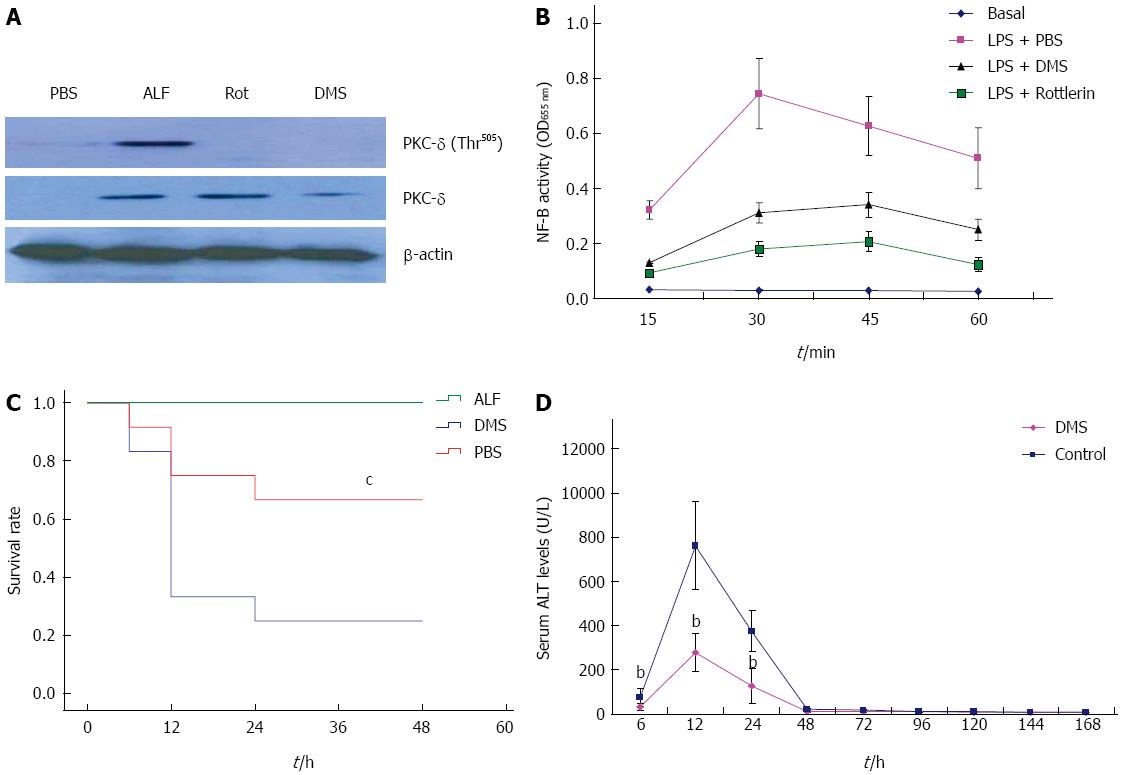Copyright
©The Author(s) 2015.
World J Gastroenterol. Dec 28, 2015; 21(48): 13438-13446
Published online Dec 28, 2015. doi: 10.3748/wjg.v21.i48.13438
Published online Dec 28, 2015. doi: 10.3748/wjg.v21.i48.13438
Figure 4 Sphingosine kinase 1 dependent protein kinase C-δ activation in lipopolysaccharide-stimulated macrophages and in the acute liver failure mouse model.
Animals were treated with vehicle or DMS (50 μmol/L) 30 min before the induction of acute liver failure. A: Inhibition of Sphk1 activity with DMS down-regulated PKC-δ expression and phosphorylation of Thr505 in liver tissue of mice; B: DMS and rottlerin down-regulated NF-κB activity in LPS treated macrophages; C: Kaplan-Meier analysis of the effect of DMS on the survival rate of the animals. cP = 0.001 (log-rank test, F = 14.841); D: Serum ALT levels at 6, 12, 24, 48, 72, 120, 144 and 168 h after treatment. DMS treatment decreased the levels of serum ALT at 6, 12 and 24 h (203.1 U/L ± 56.9 U/L, 2196.3 U/L ± 676.3 U/L, 982.3 U/L ± 255.9 U/L vs 453.7 U/L ± 102.3 U/L, 6993.6 U/L ± 1209.5 U/L, 2991.1 U/L ± 678.5 U/L, t = 3.79, 9.52 and 8.66, respectively, bP < 0.01). The mean ± SE of three independent experiments is shown (error bar indicates SE). DMS: N,N-dimethylsphingosine; SphK1: Sphingosine kinase 1; PKC: Protein kinase C; ALF: Acute liver failure; LPS: Lipopolysaccharide.
- Citation: Lei YC, Yang LL, Li W, Luo P. Sphingosine kinase 1 dependent protein kinase C-δ activation plays an important role in acute liver failure in mice. World J Gastroenterol 2015; 21(48): 13438-13446
- URL: https://www.wjgnet.com/1007-9327/full/v21/i48/13438.htm
- DOI: https://dx.doi.org/10.3748/wjg.v21.i48.13438









